The Wonderful Season of Christmas Cakes in Japan
To many Japanese, the image of Christmas is a winter wonderland cloaked in a blanket of white whipped cream, accented by shrubs of succulent strawberries. Indeed, without religious connotations, Christmas in Japan is a holiday that centers on serving a special cake for dessert.
In 1910, confectionery manufacturer Fujiya introduced the first Japanese-style strawberry shortcake at Christmas made from a sponge cake with whipped cream and decorated with strawberries, chocolate and a Santa Claus figure (unlike the American version of the strawberry shortcake made with a sweet biscuit, the Japanese one has always been a sponge cake). By 1922, Fujiya began selling these cakes as regular seasonal items, but it wasn’t until the 1950s when most people had refrigerators that Christmas cakes became instilled as a national tradition.
The Christmas cake has since evolved into a high culture where Japan’s top pastry chefs flex their culinary muscles. Indeed, department stores put together spectacular brochures showcasing Christmas cakes from major hotels available to be reserved – often far in advance. But the superstar chefs admit they draw inspiration from remembering their childhoods, when the cakes were a special luxury they looked forward to with great anticipation.
“Nowadays, people can buy cakes at convenient stores. Back then, however, it was often the only time of the year that we got to eat a Western style cake. Sometimes we had small presents but that was optional. Christmas equaled “cake,” recalls Junichi Goto, the sous pastry chef at the Grand Hyatt Hotel. Chef Takahiro Moriya, the head pastry chef of Pierre Gagnaire at the ANA Intercontinental Hotel Tokyo, always loved sweets and was a child who grew up making pancakes for his younger siblings. The excitement of eating Christmas cake during his childhood, he says, was one of the reasons he wanted to become a pastry chef. “It was such an exciting event for all the kids to have that cake with all those strawberries,” he says with a smile.
While the simple Fujiya cakes are still popular, the strawberry shortcakes offered by Japan’s top patisseries are truly exquisite. They are in agreement over two factors that make a perfect cake: 1) Do not change a proven recipe. 2) Domestic strawberries are in season in December and having the best fruit results in the best cakes.
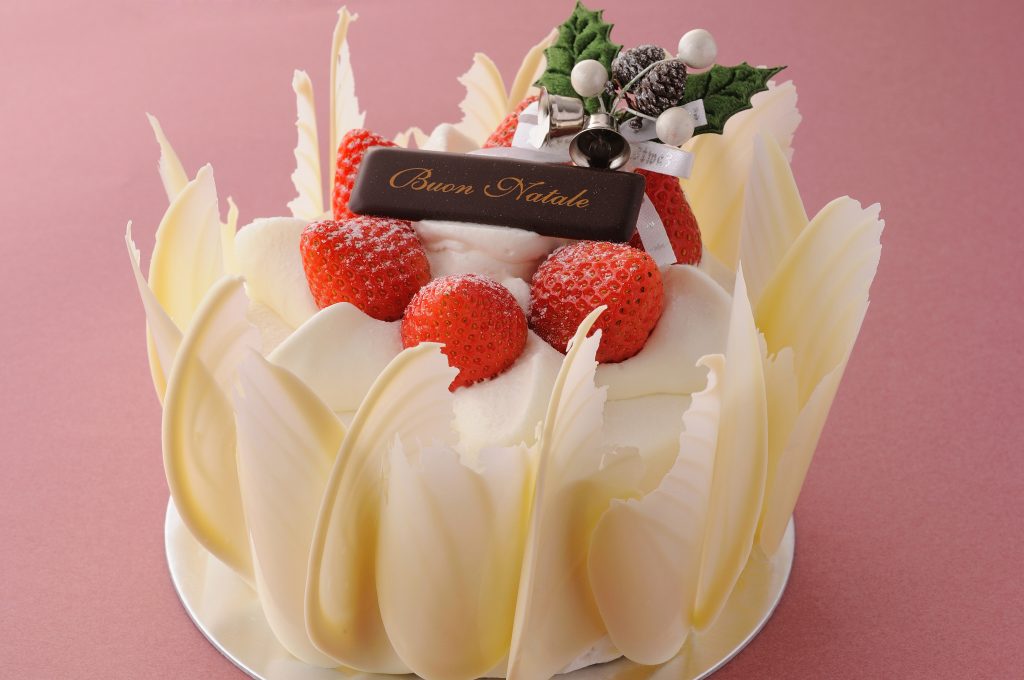
Grand Hyatt Tokyo
At the Grand Hyatt, their Christmas shortcakes do not stray much from the version they serve all year around, except the strawberries are Japanese. The cake, though, is dressed up for the holidays by wearing thin layers of white chocolate like a feather wrap. At the Intercontinental, they have essentially used the same recipe for over 25 years, and while small alterations have been made, head pastry chef Naohito Yabu sees no reason to make any radical changes. “Using the right ingredients and finding the right balance creates the best taste. That’s not a trend that changes,” he says.
While nothing will rival the popularity of the ubiquitous strawberry shortcake, Japan’s top pastry chefs are responsible for concocting original cakes that have no rivals. Chef Moriya is responsible for creating two Pierre Gagnaire signature cakes. The first is a white chocolate cake with ginger and syrup over a base of ginger sable cookie and almond cake. The second is a log-shaped milk chocolate mousse with pistachio mousse, caramel cream and chocolate biscuits. At the Grand Hyatt, their chocolate mousse limited edition cake features tonka beans, crème brulee and pears with a crumble crust that is soft yet has a crunchy texture.
A recent trend in Japan is Christmas treats with a longer shelf life. The Intercontinental Hotel’s gingerbread house was a huge hit last year so they are introducing it again. “But this year, we’re making it even more whimsical by adding small pieces of chocolate inside the house for kids to find,” explains Chef Yabu. The gingerbread is his original blend of spices. The construction of the house is a labor-intensive affair, but Yabu says it’s worth the time. “The kitchen smells wonderful and it gets everyone into the Christmas season mood, so making them is a joyous experience,” he says.
The Grand Hyatt has a Christmas hamper, similar to one they had last year which also sold well. This year, items include chocolate-covered nuts, banana brownies and peach pound cakes. The colorful combination is perfect for sharing at work or as a present.
To round out their Christmas season offerings, the two hotels have taken off in different directions. Chef Goto is a winner of international pastry contests, including the Coupe du Monde de la Patisserie in France and the International Pastry Tournament in Monaco. Rather than using unique ingredients or original combinations, Goto says internationally recognized creations are won on how well fundamentals are mastered. Coming from this background, he is committed to traditional fares he believes are the most accepted and loved by the Japanese. One of their cakes is made from rich chocolate ganache decorated with strawberries on top. The other is another Japanese favorite, the strawberry mille-feuille; layers of crispy pie crust with custard cream and layers of strawberries sandwiched in between.
The Intercontinental Hotel ventures in the opposite direction, offering known favorites but also introducing Christmas traditions from around the world. Their German Stollen (a bread-like fruitcake) and their French fruit brioche (a buttery bread with dried fruits) have some recognition in Japan. The most surprising item they offer is the traditional English Christmas pudding.
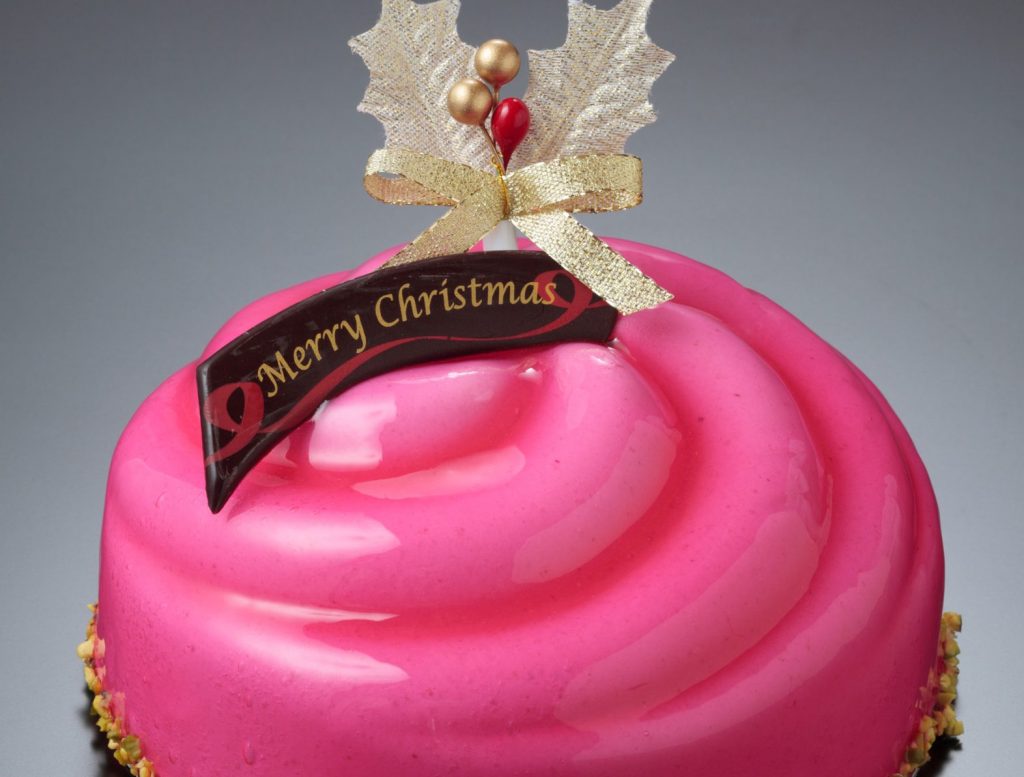
ANA InterCntinental
Recreating the plum pudding — a steam cake loaded with plum, raisins, variety of nuts that is then served flambéed with brandy — was a huge experiment for Chef Yabu. “Last year, I had a sample cake sent from England and attempted to reproduce something similar based on tasting it since there is nothing resembling it in Japan. However, it was very difficult to put together in a short time,” he admits. “This year, I began by soaking the dried fruits in liqueur months ahead. This step gives the right balance.” Yabu admits that the strong liqueur and abundance of dried fruit makes this a dessert strange to the Japanese palate. “We only have enough ingredients to make thirty of them. We don’t expect it to be a bestseller but we want to be known as the purveyor of Christmas sweets from an international perspective and be the best place for authentic plum pudding in Tokyo,” he explains. At the same time, the Intercontinental is also offering a Japanese flavored Stollen made with black sesame, ginger and black beans.
Indeed, whether you’re after the international flavors of Christmas you remember from home, or exotic-tasting and exquisite-looking original sweets – Japan offers rich flavors of Christmas to suit everyone’s taste. My advice? Get a high-quality Japanese Christmas strawberry shortcake!
(All items mentioned are available for reservation at the respective hotels.)
Story by Carol Hui
From J SELECT Magazine, December 2010

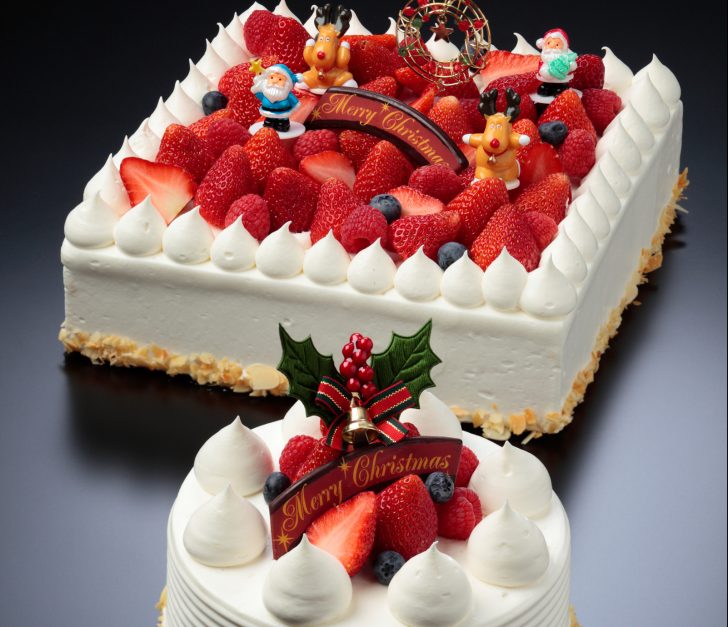



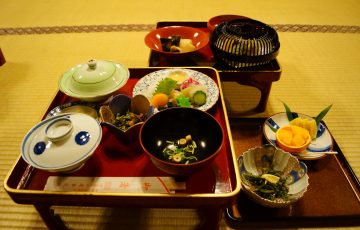


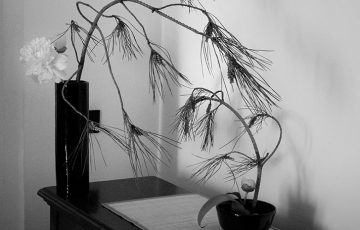

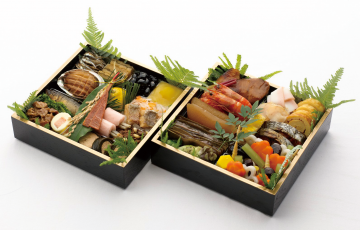




Recent Comments